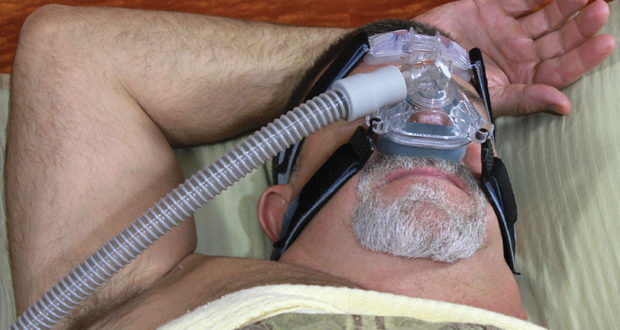Chronic Obstructive Pulmonary Disease (COPD) is a progressive respiratory condition that makes it increasingly difficult to breathe. Affecting millions of Americans, COPD includes chronic bronchitis, emphysema, or a combination of both. This disease causes inflammation in the lungs and obstructs airflow, making everyday activities feel exhausting.
Though a COPD diagnosis can feel overwhelming, the condition is manageable with early intervention, lifestyle changes, and ongoing treatment. While there’s no cure, proper care can significantly slow disease progression and dramatically enhance a patient’s quality of life.

Quit Smoking: The #1 Step in Managing COPD
Why Smoking Is So Dangerous
Cigarette smoke is the leading cause of COPD. Continuing to smoke after diagnosis only worsens symptoms and speeds up lung damage. Quitting smoking is the single most important change COPD patients can make to improve their prognosis.
How to Get Help Quitting
Programs like Bayhealth’s Tobacco Cessation Program provide support, education, and tools to help patients quit for good. This free, seven-week program is available to all Delaware residents and helps individuals kick the habit through personalized guidance and peer support.
Understand the Impact of Seasonal Changes
COPD and the Seasons
COPD symptoms often fluctuate with the seasons. Winter brings flu viruses, pneumonia risks, and indoor allergens like dust mites or pet dander. Meanwhile, spring and summer introduce high pollen levels, humidity, and poor air quality, which can all trigger flare-ups.
Tips for Seasonal COPD Management
-
Use air purifiers at home
-
Check daily air quality reports
-
Avoid outdoor activities during high-pollen or high-smog days
-
Keep living spaces free of dust and allergens
Stay Protected with Essential Vaccinations
Why Vaccines Are Critical for COPD Patients
Because COPD patients expend more energy to breathe, they are more vulnerable to infections like influenza and pneumonia. Vaccinations provide a first line of defense and can prevent serious complications or hospitalizations.
Other Prevention Tips
-
Practice frequent hand washing
-
Avoid close contact with sick individuals
-
Wear a mask during flu season in crowded areas
Eat Well to Breathe Easier
Nutritional Tips for COPD Management
Diet plays a surprisingly vital role in COPD care. Digesting food takes energy, and meals high in carbohydrates can increase carbon dioxide levels in the blood, making breathing harder. Instead, focus on:
-
Eating 4–6 small meals daily
-
Prioritizing lean protein, calcium, and Vitamin D
-
Avoiding salty and carb-heavy foods
-
Keeping the nasal cannula on during meals if oxygen is prescribed
Sample COPD-Friendly Breakfast
Start your day with high-fiber options like bran cereal and whole-wheat toast, paired with a hard-boiled egg or Greek yogurt for protein. It’s about fueling your body without overtaxing it.
Physical Activity: The Key to Stronger Lungs
Why You Should Stay Active
Many people with COPD shy away from physical exertion, but inactivity actually worsens their condition. Regular, moderate activity helps improve lung function, boosts energy, and prevents exacerbations.
Pulmonary Rehabilitation
Bayhealth offers a Pulmonary Rehab and Maintenance Program specifically designed for COPD patients. These medically supervised sessions focus on breathing techniques, endurance training, and muscle strengthening.
“Several patients have even reduced their dependency on supplemental oxygen thanks to regular participation,” says Crystal Hiser, RRT, BS.
Manage Stress to Improve Breathing
The Link Between Anxiety and COPD
Stress and anxiety can trigger shallow, rapid breathing, worsening symptoms and leading to panic. Managing mental health is a crucial component of living well with COPD.
Effective Stress-Reduction Techniques
-
Practice deep breathing exercises
-
Listen to calming music
-
Meditate or practice mindfulness
-
Join a support group or talk to a counselor
Educate Yourself and Join a Support Group
Knowledge Is Power
Understanding COPD empowers patients to make better health decisions. Bayhealth’s Better Breathers Club offers educational sessions on medications, nutrition, exercise, and symptom management. These meetings also connect patients with others facing similar challenges, offering encouragement and community.
Get Diagnosed Early for Better Results
If you or a loved one experiences symptoms like persistent coughing, mucus production, shortness of breath, or frequent respiratory infections, especially with a history of smoking or pollutant exposure, don’t delay seeking medical evaluation.
Treatment Plans Are Personalized
Every patient is different. Based on a detailed assessment of your symptoms, risk factors, and pulmonary function tests, your doctor will recommend a customized treatment plan. This might include:
-
Inhalers or bronchodilators
-
Oxygen therapy
-
Pulmonary rehab
-
Nutritional counseling
-
Stress management tools
Final Thoughts: Take Control of Your COPD Journey
COPD doesn’t have to control your life. With early intervention, support from healthcare providers, lifestyle adjustments, and a commitment to wellness, you can breathe easier and live better. Speak with your pulmonologist or primary care provider about your symptoms, and take proactive steps today to manage your respiratory health.
FAQs:
What is COPD?
COPD stands for Chronic Obstructive Pulmonary Disease, a group of progressive lung diseases that restrict airflow and make breathing difficult.
Can COPD be cured?
No, COPD is not curable, but with proper treatment and lifestyle changes, symptoms can be managed, and progression can be slowed.
What foods should I avoid with COPD?
Avoid high-carb, salty, and processed foods. These can increase carbon dioxide levels or cause fluid retention, making breathing harder.
How does quitting smoking help with COPD?
Quitting smoking stops further lung damage and allows the body to respond better to treatments, improving overall lung function over time.
How often should I exercise with COPD?
Aim for moderate activity 3–5 times a week. Walking, cycling, or light resistance training can greatly improve stamina and lung efficiency.




